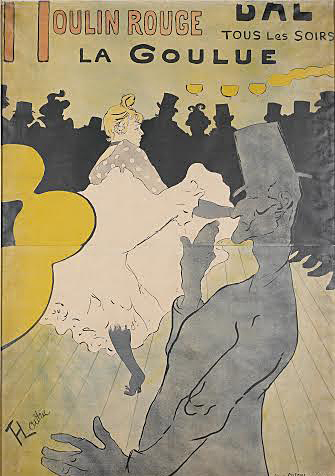
‘Moulin Rouge – La Goulue’ by Henri de Toulouse-Lautrec, which is set to be shown in CMA’s exhibit ‘Toulouse-Lautrec and La Vie Moderne’ through May 18.
Credit: Courtesy of Melissa Ferguson
The Columbus Museum of Art’s newest exhibition, “Toulouse-Lautrec and La Vie Moderne: Paris 1880-1910,” comprises a collection of artwork that captures the life in Paris during the turn of the century.
The art is about “enjoying life as you can, right now, taking it for all it’s worth,” said Dominique Vasseur, CMA’s curator of European art.
Vasseur said 90 artists are slated to be showcased in the exhibition, including Henri de Toulouse-Lautrec, a French painter, printmaker and illustrator who is best known for his prints and posters that advertise performers from cabarets, such as the Moulin Rouge.
“This is one of the first times where this kind of advertising really blossoms,” Vasseur said. “Paris at this time was all about modernity.”
The exhibition displays more than 185 works of art including paintings, posters, illustrated theater programs, rare cabaret shadow puppets and more, CMA Executive Director Nannette Maciejunes said.
The works were acquired through distinguished private and public collections, including Ohio State’s Historic Costume and Textile Collection, Vassuer said.
In the 30 years in which these artworks were created, often called la Belle Époque or fin de siècle, the world of entertainment rapidly grew in Paris. Vasseur said artists, writers and intellectuals often gathered in cabarets or theaters and became inspired by the atmosphere and performers.
“Art and popular culture joined forces in a way that I think might be unprecedented,” said Andrew Shelton, Ohio State professor and chair of the Department of the History of Art. “It’s hard to imagine an earlier time in which artists were so enmeshed in the entertainment of their environment.”
Lautrec’s style has been celebrated for portraying his subjects realistically.
“He really tries to capture their unique humanity,” Shelton said.
Lautrec only lived until he was 36 because of deteriorating health and extensive alcoholism, yet managed to complete thousands of drawings, posters and paintings, Vasseur said.
“Despite issues, the artist is able to create an art that in a sense transcends those human level problems,” Vasseur said.
The exhibition opened Friday and is slated to stay through May 18. The CMA is open every week Tuesday through Sunday from 10 a.m. to 5:30 p.m., and 10 a.m. to 8:30 p.m. Thursdays.
The museum is located at 480 E. Broad St. Admission is free Sundays, and $8 all other days for students with valid ID over 18.
“Toulouse-Lautrec is the name that we all know, but there are other artists that are going to be worth discovering … so it should be an extraordinary opportunity,” Shelton said. “I would absolutely encourage students to go.”


